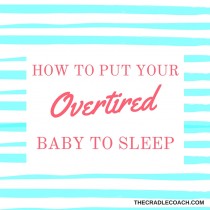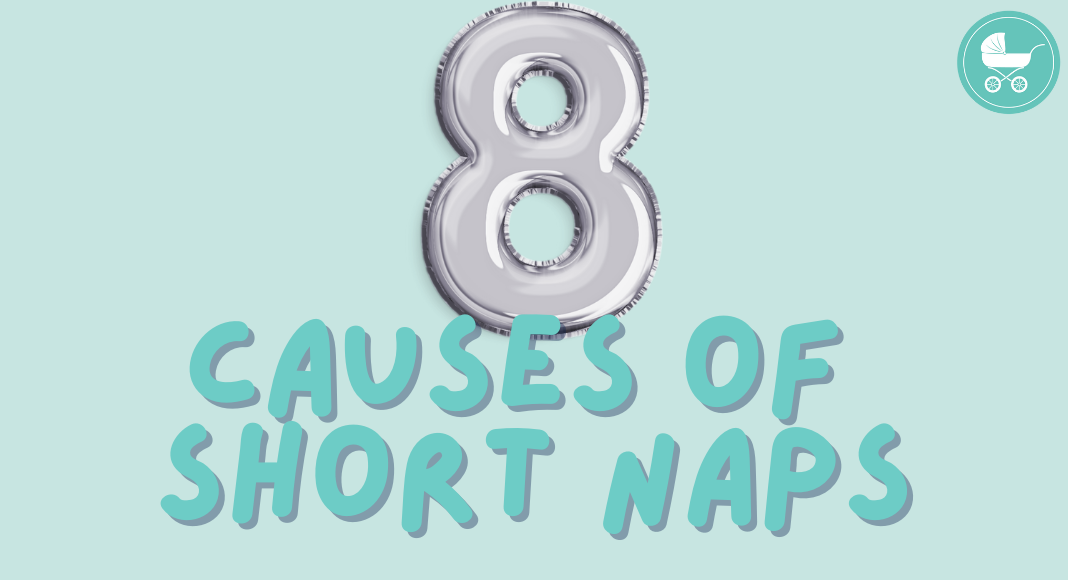
January 25, 2016
One of the biggest challenges of having a third child is giving him quality naps at consistent times. Honestly, a consistent nap time hardly happens. With my older children’s schedule, the poor boy is constantly going to sleep at random hours in the day and often times, overtired. And boy oh boy is this hard. […]
How to Put Your Overtired Baby to Sleep

One of the biggest challenges of having a third child is giving him quality naps at consistent times. Honestly, a consistent nap time hardly happens. With my older children’s schedule, the poor boy is constantly going to sleep at random hours in the day and often times, overtired. And boy oh boy is this hard. Getting an overtired baby down to sleep is one tough job! They fight it, they cry, I cry, I get frustrated, it’s an all out battle that could have easily been fixed if I just got him down at his set time… The more urgent and necessary sleep becomes, the more your baby wants to fight falling asleep. This is often a situation that many mother’s are at a loss on how to handle it.
Why is it happening? The sleep hormone that is released when a body needs rest is called Melatonin. Cortisol is the hormone that keeps our bodies awake and alert. These two hormones change throughout the day and are often governed by light. If it’s dark, the melatonin hormone is released and if there is light, cortisol is released which causes us to wake up.
Once we have kept our little ones up past their sleep window, cortisol is released to keep their bodies up and alert. But when we finally trying to get them down to sleep shortly after, cortisol is what makes it hard for them to settle to sleep. Their bodies are saying “stay up, stay up” while we are telling them, “no it’s time to go to sleep now”. By helping them settle down, and work with their brain to assist the release of melatonin, you will find it easier to put down your overtired baby. Here is how to help prepare your child for the best sleep without having to fight against it.
First, always watch for their sleep signs. Sleep signs are those mannerisms they give when their body is ready to sleep. Some signs are…
Eye rubbing
Yawning
Slowed activity
Listlessness
Limpness
Zoning or staring blankly
Whining and fussing
Loss of interest in people and toys
Second, you want to steer clear of over tiredness. If you know your child’s consistent wake times in between sleep, do your very best to stick to it. Here’s an example:
An average 8 month old might wake at 7am and typically last 1.5-2 hours of being awake before she has to take her first morning nap. Once she wakes from her nap, she can typically go anywhere from 2.5-3 hours of being awake before a second nap. Finally, after her second nap is complete, she typically can last no more then 3-4 hours before needing to be in bed for the night.
Third, learn how to settle their body down. If you’re like me and have a crazy schedule that makes it harder to stick to a consistent wake time – allowing for over tiredness to seep in – here is how to handle the situation.
Newborns – 12 months old: you might need to help them soothe a bit more, especially after they are at the point of crying. Try these techniques…
Rocking
Swaddling
Shushing
Singing
Walk into a dark room
Turn on the sound machine
Nursing or bottle feeding, but not to the point of being asleep
12 Months old – Three years old: It’s all about distraction. Try to offset the situation and calm them down as best you can. Try these techniques…
Walk into a quiet room
Read a book
Sing a soft lullaby
Turn on soft white noise
Make the room dark
Get instant access to our free sleep class for children from newborn to 5 years old. You will learn how to get your child to sleep independently -- and all through the night!
Get Your Child To Sleep All Night Long in as Little as 7 Days!
join the free class
THE CLASS


